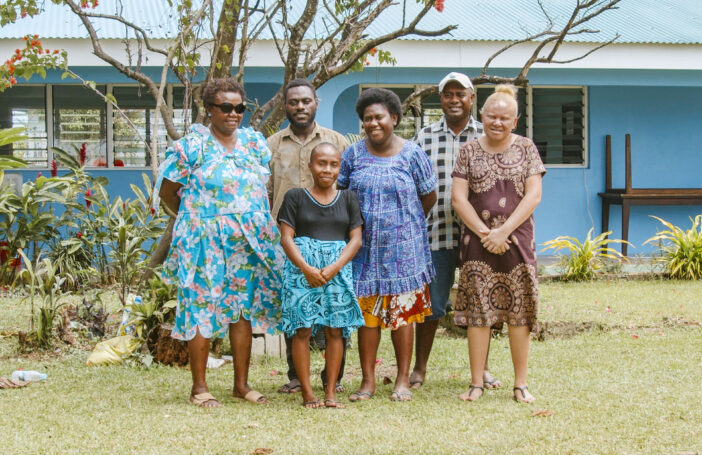Having worked in the assistive technology (AT) space in the Pacific for many decades, it was a relief for us to hear AT being highlighted as an important requirement for disability equity and inclusion at the recent ANU Development Policy Forum.
AT is a broad term, including assistive products and related services. It is a multifaceted concept that can have significant positive benefits for people and communities. This blog is written from the perspective of AT service provision, highlighting the importance of scaling up AT service provision and reflecting on possibilities for the Pacific region, in light of the renewed policy ambition towards disability equity and rights.
A recent Devpolicy blog, ‘Beyond a seat at the table: towards disability equity in Asia-Pacific’, discussed the need to focus on the pre-conditions for disability inclusion and equity. As recognised by the Pacific region’s peak body on disability, the Pacific Disability Forum, access to AT is an important pre-condition to inclusion. Access to AT is also enshrined as a right in the United Nations Convention on the Rights of Persons with Disabilities.
Many people will require some kind of AT at some point in their lives – AT examples include glasses, hearing aids, walking aids, wheelchairs, prostheses, orthoses and products to support memory or communication. AT service provision is often organised under the health sector and is a component of universal health coverage. However, it also cuts across many domains, including community-based inclusive development (another pre-condition for inclusion), education and economic development.
Providing AT is not simply a matter of handing over a piece of equipment. For example, pre-positioning AT to prepare for a humanitarian response, or donating a container of products, is not enough when there are such large gaps in access to AT in the Pacific. Sustainable services – with trained personnel, the right products and equipment, equitable policies and integrated referral service networks collaborating with communities and families – are required first, so communities can adequately respond, receive AT products, provide AT in a safe way, and provide follow-up services over the longer term. Sustainable services may be established across both private and public sector but should be enabled to work collaboratively.
We support the recent Devpolicy blog calling for ambition, accountability and well-resourced programs for disability equity and rights. Further, there are several key considerations specific to AT.
First, we need to build on previous success and investments. AT is not a new element of Department of Foreign Affairs and Trade (DFAT) development initiatives. There has already been great impact resulting from Pacific governments prioritising the development of AT and associated rehabilitation services, supported by Australian funding, as this video from the Samoa Mobility Device Service, this GReAT summit paper (p. 208) and this DFAT performance report from Tonga show. Further, DFAT has previously commissioned relevant studies that can inform the scaling up of AT in the region, such as the World Health Organization Western Pacific AT Procurement Study. What is new is AT being highlighted as a priority area. Reflecting, learning and building on the strengths of current services and past initiatives can and should inform the scaling up of access to AT services in the Pacific.
Second, we need to recognise and reimagine. Recognition of the broad range of AT that people require, and reimagining how development initiatives can effectively support AT provision, is crucial. This will require genuine, multisector collaboration. We advocate integrating AT not only as a priority area for disability equity, but also recognising it as an enabler of health, education, economic development and gender equality (to name just a few). It is critical to understand the intersection of disability, gender, climate change and disaster preparedness in the region, and how AT can support inclusion and equity in these areas. This will require development initiatives to look beyond current ‘silos’ and established ‘systems’ to reimagine how AT can be incorporated in development programming.
And third, collaboration and integration are key. Collaboration at community, national and regional level is required. At community and national level, facilitating deeper collaboration between organisations of persons with disabilities, people who use AT (or would use AT if it was available), service providers (many of whom have decades of experience providing AT services), the private sector (particularly pharmacies) and training institutions, would support the scaling up of AT and equitable AT services. At regional level, scaling up the AT sector requires consideration of AT procurement initiatives.
The Pacific AT Procurement Study from 2020 outlines a blueprint and roadmap for a regional AT hub. This would also create opportunities to explore the intersection of disaster preparedness, gender equality and disability programming. An emerging peak body in the region also warrants support, as the Pacific Rehabilitation and Assistive Technology Association establishes itself; and collaboration between such professional bodies and the peak disability advocacy bodies is also crucial. Further, regional training initiatives specifically for more complex types of assistive products (such as prostheses and orthoses) will enable development in these areas.
AT is a critical enabler of many aspects of life for so many people in the Pacific. We very much welcome the current focus and discussion about the importance of DFAT supporting the pre-conditions to disability inclusion, and look forward with much anticipation as more people have access to AT. AT should no longer be considered as ‘too hard’, but as an integral aspect of sustainable development. It is essential that it is included as a key focus of DFAT’s upcoming Disability Equity and Rights Strategy.





Very interesting read. I want to think that policy is an issue. At the policy level, most organizations are great. The challenge is in translating policies into tangible, observable practical actions at the ground level. That’s what I want to see as an amputee, ACTIONS.